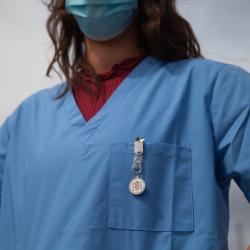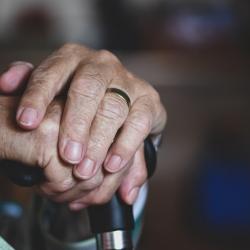CPAP Management Tips for Older Adults with Sleep Apnea
Sleeping soundly is one of life's most pleasant experiences.
Unfortunately, high-quality slumber can be cut short by sleep apnea, a condition wherein one's throat muscles narrow during rest.
To combat this, a CPAP (continuous positive airway pressure) machine is often used to facilitate breathing by opening up the throat muscles and promoting oxygenic circulation. This keeps you from rousing yourself awake during the night and allows you to enjoy a good-quality slumber.
Despite its undeniable benefits, this equipment can be quite complex to use and maintain, especially for older adults. The last thing you'd want to do is accidentally break the device by wrongfully tinkering with the settings.
If you want to make the most of your CPAP machine, here are a few tips on how to properly handle, clean, and use a CPAP machine.
How To Prepare For CPAP Therapy
If you've been newly prescribed CPAP therapy to treat sleep apnea, you'll benefit greatly from adjusting your lifestyle to accommodate this new change.
This is especially true for older adults, as they are more likely to be at risk should they encounter any accidents or experience any faults while using this machine.
Here are some things you can do to prepare for CPAP therapy:
- Adjust your sleeping position: Some CPAP masks can leak air or dislodge when you're sleeping in bad positions. Therefore, it's good to form a habit of sleeping on your side or whatever's best for your specific mask. A CPAP pillow may also help in this scenario.
- Avoid drinking alcohol: Drinking alcohol and taking certain types of medications can interfere with your sleep quality and airway passages. It's best to avoid drinking alcohol entirely. For medication concerns, talk to your doctor about any potential interactions.
- Lose weight: Obese and overweight people tend to have higher deposits of fat in their upper respiratory system, which leads to worsening symptoms of sleep apnea. Losing weight by following a strict diet and listening to your physical needs can help. Fat reduction surgical treatment may also be effective.
How to Clean Your CPAP Machine
To make the cleaning process easier, it's best to break down the CPAP machine into three distinct parts: the humidifier, mask, and air tube.
1. Mask Care
Cleaning your CPAP mask is a crucial step in the maintenance process. Daily cleanup is necessary to ensure that no bacteria build-up takes place.
Start by plugging off your CPAP machine and removing the mask and air tube from the base machine. Set the air tube aside, and further disassemble the mask into the cushion, frame, and headgear.
Soak your cushion and headgear in a tub of clean water. Scrub it gently with a cloth with mild soap to get rid of the oil and skin residue that may have settled during the night.
Once scrubbed, do a final rinse then wipe it with another clean towel and set aside. Leave the components to dry away from harsh sunlight. After a few hours, you may use this mask again.
2. Air Tube Care
Your unattached air tube undergoes virtually the same cleanup process as the mask. Wash the outer and inner parts of the air tube in a tub, while rubbing it with a cloth soaked in mild soap and water.
Once rinsed, leave the air tube somewhere dry. Refrain from having it in direct contact with the sun.
3. Humidifier Care
To clean the humidifier, remove it from the CPAP machine, then take it off the base.
Empty the water from the chamber and wash the container with mild soap and warm water, all while simultaneously wiping it with a soft cloth.
Dry the humidifier with a clean towel and let it sit in a dry place. Be sure to keep it away from direct sunlight.
If your humidifier has any signs of permanent discolouration, it's best to discard it and purchase a new one to prevent exposure to contaminants.
3 Tips For Senior Sleep Apnea Patients
Transitioning to relying on a CPAP machine can be overwhelming at first, especially for newcomers.
But by applying the right habits, anyone, especially seniors, can find comfort in using the machine to get a good night's rest.
Here are a few tips on making the most out of your CPAP machine and getting rid of those pesky snores for good.
1. Get Used to The Mask
One of the most difficult challenges for beginner CPAP users is getting accustomed to the mask. Far too often people complain about the discomfort of the mask, which can cause them to quit using it altogether.
To acclimatize yourself, try wearing your mask outside the bedroom, like watching TV or reading. This will help your body become familiar with the mask and normalise the bulky feeling on your face.
2. Choose The Right Machine
It's important to do your research before purchasing a CPAP machine. Countless different CPAP devices on the market boast a unique set of functionalities.
For instance, a CPAP mask from CPAP Direct and other retailers can come in a variety of frames, each of which is designed for a particular sleeping position. Some CPAP machines also come in a smaller travel-friendly size, making them perfect for long-distance trips.
3. Talk to Your Doctor
Before using a CPAP machine, it's crucial to discuss your intent in using this device with your doctor.
Although rare, some patients can misdiagnose themselves and put themselves in harm's way by buying a sleep apnea machine and acting on their own, so take the time to consult with a medical professional whenever possible.
More to Read:
Previous Posts:











